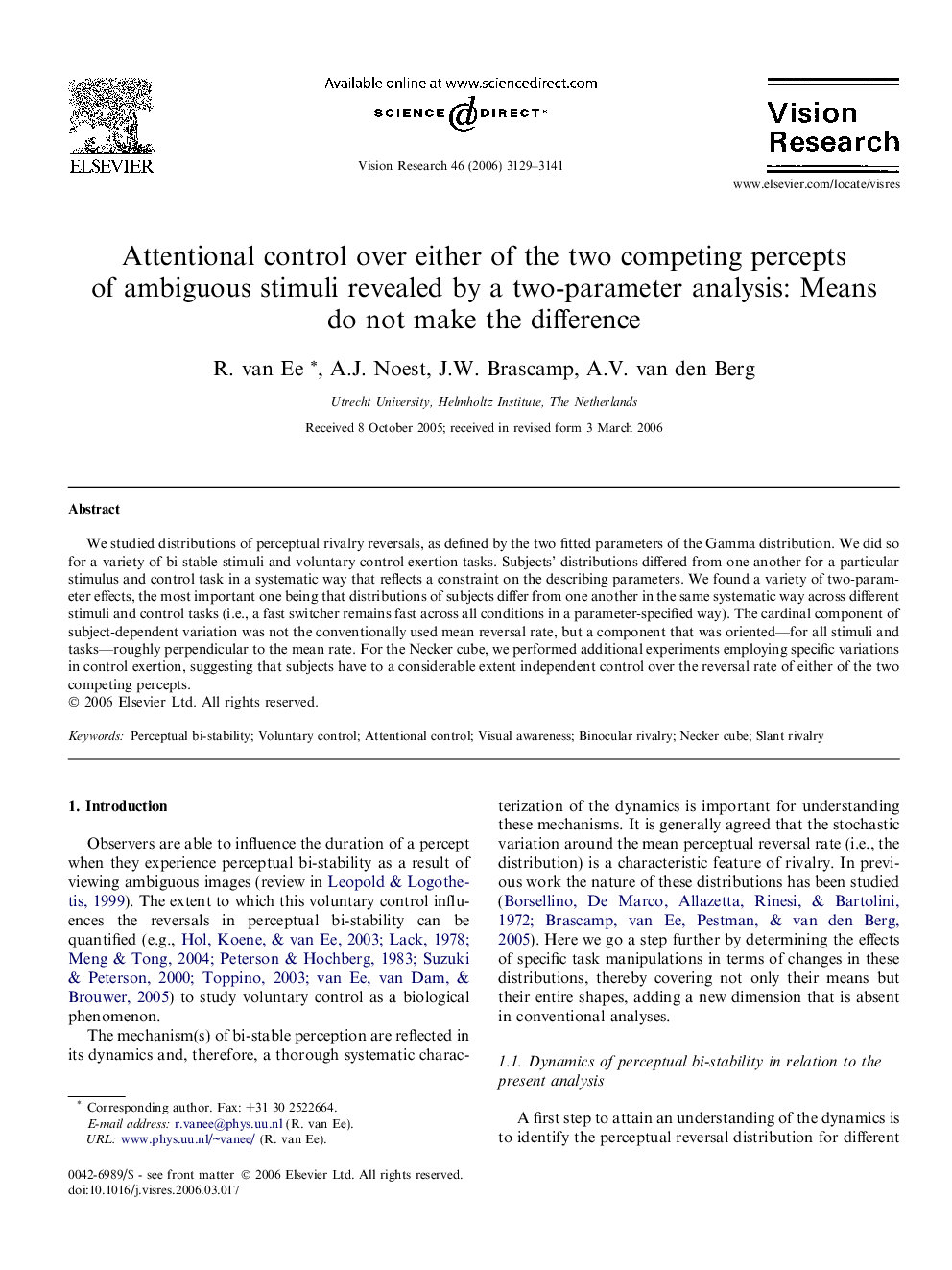| Article ID | Journal | Published Year | Pages | File Type |
|---|---|---|---|---|
| 4035510 | Vision Research | 2006 | 13 Pages |
We studied distributions of perceptual rivalry reversals, as defined by the two fitted parameters of the Gamma distribution. We did so for a variety of bi-stable stimuli and voluntary control exertion tasks. Subjects’ distributions differed from one another for a particular stimulus and control task in a systematic way that reflects a constraint on the describing parameters. We found a variety of two-parameter effects, the most important one being that distributions of subjects differ from one another in the same systematic way across different stimuli and control tasks (i.e., a fast switcher remains fast across all conditions in a parameter-specified way). The cardinal component of subject-dependent variation was not the conventionally used mean reversal rate, but a component that was oriented—for all stimuli and tasks—roughly perpendicular to the mean rate. For the Necker cube, we performed additional experiments employing specific variations in control exertion, suggesting that subjects have to a considerable extent independent control over the reversal rate of either of the two competing percepts.
